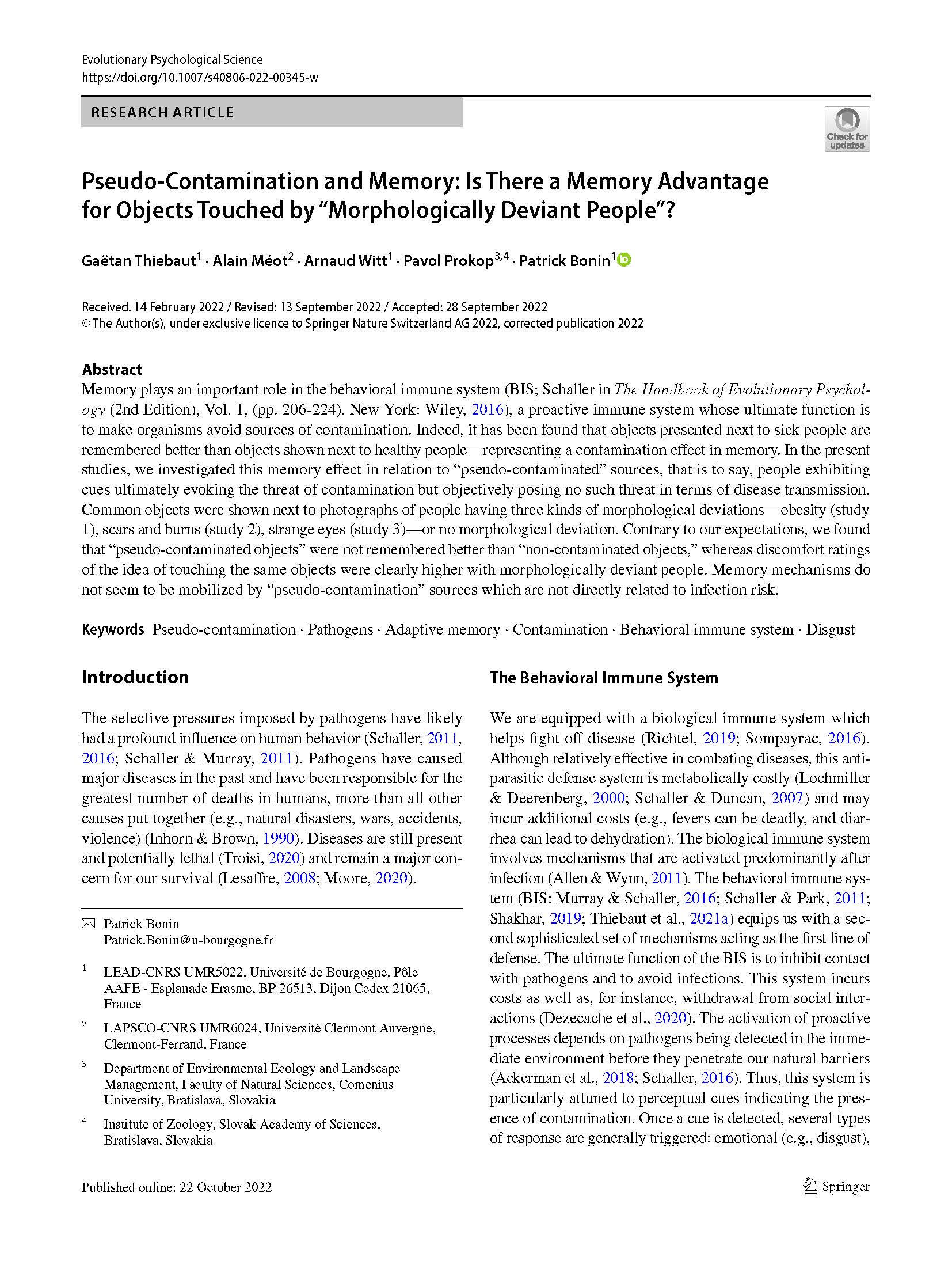Memory plays an important role in the behavioral immune system (BIS; Schaller in The Handbook of Evolutionary Psychology (2nd Edition), Vol. 1, (pp. 206-224). New York: Wiley, 2016), a proactive immune system whose ultimate function is to make organisms avoid sources of contamination. Indeed, it has been found that objects presented next to sick people are remembered better than objects shown next to healthy people—representing a contamination effect in memory. In the present studies, we investigated this memory effect in relation to “pseudo-contaminated” sources, that is to say, people exhibiting cues ultimately evoking the threat of contamination but objectively posing no such threat in terms of disease transmission. Common objects were shown next to photographs of people having three kinds of morphological deviations—obesity (study 1), scars and burns (study 2), strange eyes (study 3)—or no morphological deviation. Contrary to our expectations, we found that “pseudo contaminated objects” were not remembered better than “non-contaminated objects,” whereas discomfort ratings of the idea of touching the same objects were clearly higher with morphologically deviant people. Memory mechanisms do not seem to be mobilized by “pseudo-contamination” sources which are not directly related to infection risk.
Pseudo‑contamination and memory: Is there a memory advantage for objects touched by “morphologically deviant people”?
